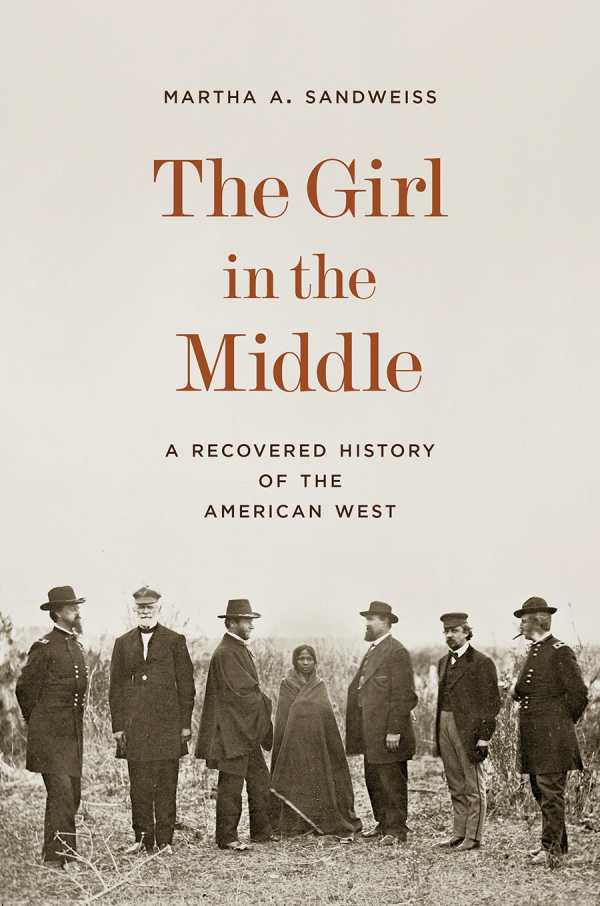The Girl in the Middle
A Recovered History of the American West
An enchanting photograph of an Indigenous girl centers Martha A. Sandweiss’s history book The Girl in the Middle, a tale of westward expansion.
In 1868, Civil War photographer Alexander Gardner arranged the peace commissioners of Fort Laramie around an unnamed Dakota girl. Here, Sandweiss investigates to learn her identity and, in turn, about Gardner and William S. Harney, a Union general who was involved in the treaty negotiations. Covering nineteenth-century instances of national and domestic violence, including the removal of Native Americans from their land, murder, and family entanglements, the book also considers Gardner’s role as a savvy photographer who used his craft to tell enduring stories.
In covering the main personalities, the book highlights the forces that drew them together. Gardner’s Scottish origins are noted, as is his work documenting the Civil War (he photographed the aftermath of Lincoln’s assassination, for instance). He displayed acumen in guiding viewer impressions at the dawn of photojournalism, understanding the persuasive interplay between images and their captions. And he wasn’t above manipulating scenes, which sets a provocative stage for his encounter at Fort Laramie.
Meanwhile, the girl in the picture, Sophie—her discovery made possible when one of her descendants recognized her—is humanized. Her troubled marriage and forced separation from her children are addressed, too. And throughout, the book examines the divisions between white settlers and their victims and photographers and their subjects. Quotes, historical facts, and interesting discursions cover the untold stories of women. And the photograph itself is returned to often to emphasize the idea that images are mysterious beyond their constructions as anthropological relics: A viewer’s understanding is dependent on the questions they ask.
A perceptive historical inquiry, The Girl in the Middle illuminates the post–Civil War era’s dark negotiations surrounding Native American land.
Reviewed by
Karen Rigby
Disclosure: This article is not an endorsement, but a review. The publisher of this book provided free copies of the book to have their book reviewed by a professional reviewer. No fee was paid by the publisher for this review. Foreword Reviews only recommends books that we love. Foreword Magazine, Inc. is disclosing this in accordance with the Federal Trade Commission’s 16 CFR, Part 255.

